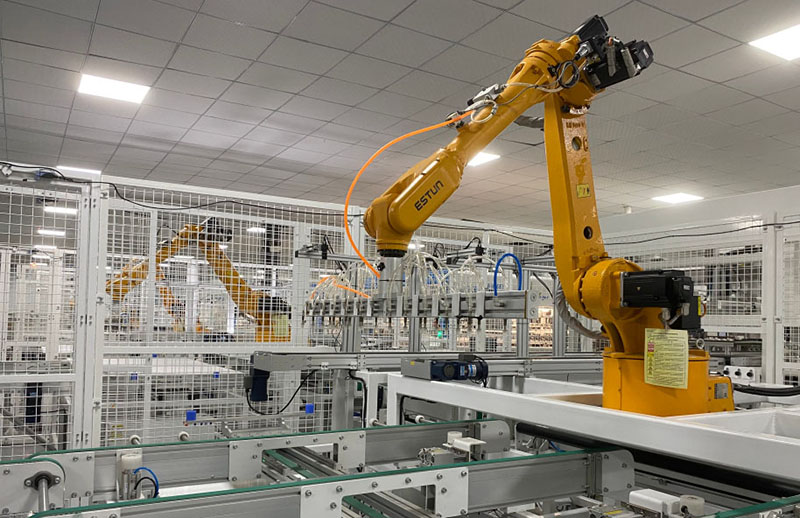As a core equipment in photovoltaic(PV) module production, the PV robotic layup machine features high precision, high speed, high stability, strong load capacity, intelligent vision systems, flexible compatibility, and ease of operation. The detailed analysis is as follows:

1. High-precision positioning to ensure module quality
Repeat positioning accuracy: Mainstream PV robotic layup machines achieve repeat positioning accuracy between ±0.06 mm and ±0.2 mm.
For example, ChinTiyan equipment provides ±0.2 mm accuracy. This far exceeds manual operation, ensuring minimal misalignment of cells on the glass substrate, thereby avoiding power loss or micro-cracks caused by displacement.
Vision-assisted system: Through industrial cameras or vision software, the robot can identify the position, shape, and orientation of cells in real time and automatically correct deviations.
2. High-speed operation to boost production efficiency
Optimized beat: The cycle time of PV robotic layup machines can be shortened to within 6 seconds.
For example, ChinTiyan equipment achieves 5.5s/string, with a maximum throughput of 200 modules/ hour. Compared with manual layup, which is less efficient and prone to fatigue, robots can work continuously 24/7 and significantly shorten line changeover times (some devices support model switching within 30 minutes).
Dynamic trajectory optimization: With self-developed algorithms, robots maintain smooth trajectories during high-speed motion, reducing the impact of mechanical vibrations on precision.
3. High stability and reliability to withstand harsh environments
Structural optimization: Using high-rigidity robotic arm designs, ChinTiyan robotic layup machine has extended arm reach from 2013 mm to 2110 mm and increased load capacity to 12 kg, meeting the requirements of large-size cell string layup.
Environmental adaptability: PV production workshops may involve dust and high temperatures. Robots are designed with dust-proof and heat-resistant features. Some devices adopt modular designs for quick maintenance and component replacement, reducing downtime.
4. Strong load capacity for diverse applications
Load range: Mainstream robots support 10–12 kg load capacity, sufficient for string layup of monocrystalline, polycrystalline, and heterojunction (HJT) cells.
Size compatibility: Equipment supports cell sizes from 156 mm to 230 mm, with flexible layup configurations , adapting to various customer requirements.
5. Intelligent vision system for fast and accurate operation
Integrated solution: Traditional “robot + vision” solutions are often complex and costly to debug. Companies like ChinTiyan integrate vision recognition with motion control in a self-developed system, enabling seamless “see and act” functionality.
Defect detection: Some advanced devices integrate cell appearance inspection, automatically identifying cracks, stains, and other defects during layup to prevent defective cells from entering subsequent processes.
6. Flexible compatibility and production line synergy
Multi-equipment collaboration: PV robotic layup machines can seamlessly interface with stringers, laminators, and other equipment, forming automated production lines. For example, one robot can serve two stringers simultaneously, doubling throughput.
Fast line changeover: With software support, production line model switching can be completed within 30 minutes, enabling flexible production for small batches and multiple product types.
7. Easy operation and low maintenance costs
One-click operation: Equipment from companies like ChinTiyan supports MES system integration. Operators can initiate the layup process with one click via a touchscreen or host computer, lowering technical barriers.
Modular design: Key components (such as robotic arms and vision modules) are standardized for quick replacement and repair, minimizing downtime losses.
